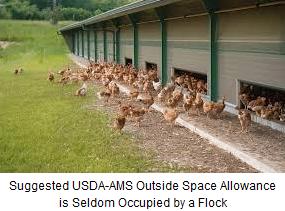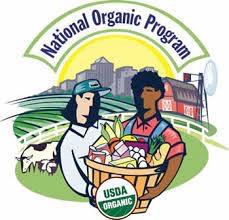 The Department of Agricultural Marketing Service released Document AMS-NOP-21-0073 prior to the August 9th publication in the Federal Register, detailing amendments to the Organic and Livestock Poultry Production Requirements pertaining to housing and management of flocks producing under the USDA Certified Organic seal.
The Department of Agricultural Marketing Service released Document AMS-NOP-21-0073 prior to the August 9th publication in the Federal Register, detailing amendments to the Organic and Livestock Poultry Production Requirements pertaining to housing and management of flocks producing under the USDA Certified Organic seal.
The purpose of the proposed rule is to ensure uniform adherence to USDA-AMS organic standards incorporated into rules issued in terms of the Organic Foods Production Act of 2000.
The important provisions comprise:
Pullet Rearing
- Beak treatment using infrared application at day old in hatcheries will be allowed. The term “treatment” is not defined and is considered to be a significant omission. In contrast, “beak trimming” is defined and will be disallowed.
- Pullets do not require outside access until 16 weeks of age.
Laying Hens
- Flocks must be allowed year-round outside access within an ambient temperature range of 40F to 90F. Provision is made for confinement presumably due to inclement weather or presumably under conditions representing a high risk of contracting a catastrophic infection. The proposed rule does not indicate any limit to confinement.
- Outdoor access should comprise at least 50 percent soil with vegetative cover. The remainder of the surface providing outside access can be gravel or concrete. Shade and shelter must be provided.
- The regulations require that “living conditions” (presumably both inside and outside) should accommodate the ‘well-being and natural behavior’ of flocks. This includes potable water, availability of litter for dust bathing and adequate space to escape aggression and an “environment appropriate to stage of life and climate”.
- Cages or other installations presumably colony modules or aviaries with closed door fronts that limit free movement of the flock within the indoor space will be disallowed.
- A maximum day length of 16 hours is specified.
- Ammonia levels should not exceed 10ppm without appropriate corrective action. Ammonia levels above 25ppm are disallowed, although the regulations do not relate level to duration of exposure.
- Adequate dry litter should be placed in houses equipped with aviaries or in the designated areas of houses with slat and floor configuration.
- Floor housing should provide 30 percent solid flooring with a layer of dry litter to allow “natural behaviors” including scratching and dust bathing.
- The regulations will designate floor area on the basis of biodensity or average-weight per square foot.
- Floor litter housing would require one square foot per three pounds of bird weight from stocking through to depletion. This assumes the reciprocal relationship of increasing hen weight to be offset by mortality through the production cycle
- Aviary systems will allow 4.5 lb. of bird per square foot.
- Wall-to-wall slatted floor systems will allow 3.75 lb. per square foot but in terms of the proposed rule would be disallowed due to the absence of a litter area.
- Combination floor and litter systems will allow 3.0 pounds per square foot.
- For the purposes of calculating floor area, all flat areas excluding nest boxes will be considered as available.
- Enclosed covered porches will not be accepted as outside area. If access to the outside is provided porches will be included in inside area.
- Outside space allowance will be 2.25 lb. per square foot, approximating 2.0 square feet for a 4.5 lb. hen.
- For the purposes of training pullets, confinement will be limited to five weeks during the production cycle.
- Six inches of perch space will be required per bird with the exception of aviary housing that will require 3.3 inches of linear perch for each hen.

The regulations advance two options for ‘grandfathering’ of existing non-compliant farms, mainly the in-line aviary complexes that represent a significant proportion of existing certified organic egg production.
- Farms or complexes that are certified within three years of the effective date of the proposed rule will have five years to comply with outdoor space requirements, stocking density, exit doors and other provisions.
- The second option for non-compliant but organic-certified layer operations at the time of implementation of the rule will have 15 years to comply with outdoor space requirements.
USDA-Agricultural Marketing Services is soliciting comments on alternative time frames for compliance based on costs and benefits to producers and consumers.
This summation of the proposed Rule on housing and management of Certified Organic flocks should be read in conjunction with the Editorial in this edition.